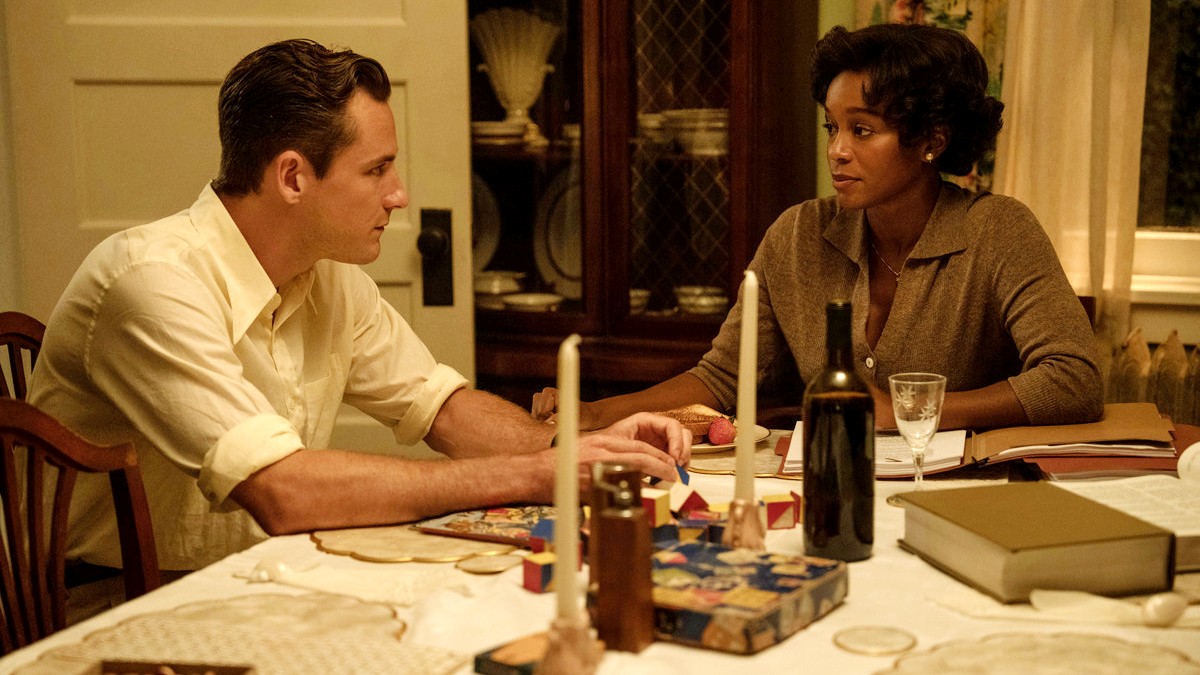Harriet Sloane’s Transformation in ‘Lessons in Chemistry’ Is the Best Departure From the Book

Apple TV+’s Lessons in Chemistry takes a few departures from the book of the same name by Bonnie Garmus, but Harriet Sloane’s (Aja Naomi King) changes are for the better. Lessons in Chemistry is set in the 1950s and follows Elizabeth Zott (Brie Larson), who struggles to prove herself as a chemist in a sexist and male-dominated industry. After losing her job, she agrees to host her own cooking show, but she uses her platform to teach women about chemistry and feminism.
In Garmus’ book, Sloane is Zott’s neighbor. She’s an elderly, grandmother-type figure who takes Zott under her wing. Harriet is filled with wisdom and kindness, though suffering from loneliness and unhappiness as her children are all grown. She’s also trapped in a relationship with her abusive husband. Sloane and Zott bond over motherhood, and Sloane becomes like a second mother to Zott’s daughter, Mad. While Garmus’ book is filled with interesting female figures like Zott and Sloane, it is lacking a bit in diversity. It does touch lightly on instances of racism and Zott’s staunch stance against it, but without any lead Black characters, it’s missing a significant piece of its portrait of women’s experiences in the 1950s.
The show suggested it would fix this problem by casting Aja Naomi King in the supporting role of Sloane. Although it was wonderful to see some diversity in the casting, it was also something to be wary of. While it is important for adaptations to diversify original works, there’s a right and wrong way to do it, especially when the source material is missing something crucial with its lack of diversity. What we don’t want is for a show or film to just race-swap a character for the mere sake of tokenism amid a work that is still largely white-focused. Fortunately, Lessons in Chemistry avoided this problem by truly reinventing Sloane and giving her a narrative of her own.
How Lessons in Chemistry transformed Harriet Sloane
Fortunately, the show transforms Sloane in a way that truly adds another layer to the female experience the series is trying to capture. First, she’s much younger in the show, putting her at a similar age as Calvin Evans (Lewis Pullman) and Zott. This does away with the grandmotherly figure or the idea that she’s just there to help with child-rearing and mentoring. It’s entertaining to watch a reversal of stereotypes, with Evans actually babysitting Sloane’s kids instead of Sloane only helping Zott’s daughter. Sloane isn’t here to help with child-rearing; she’s got her own life and career, so you know what? Evans is going to watch her kids.
She’s no longer an empty-nester yearning for a purpose. She’s a super mom, raising two young kids independently while working and serving as a pillar in her community. Her husband is deployed in the Korean War, where he serves as a military physician. Tens of thousands of Black soldiers fought in the Korean War despite still facing horrific racism from the country they were serving. While Sloane already has a lot on her shoulders, she’s also fighting to save her community. Just as Zott is fighting to break gender roles that restricted women in the 1950s, Sloane is fighting against racist tactics that segregated and targeted Black neighborhoods.
In the series, Sloane tries to prevent the California Highway Commission from bulldozing through her predominantly Black neighborhood of Sugar Hill to make way for a new highway. This captures how infrastructure, especially the development of California highways, was used as a racist tactic. Developers would purposefully design routes through Black neighborhoods to have an excuse to destroy their homes and communities or segregate them from white neighborhoods. Sloane’s fight is different from Zott’s, but it’s a genuine fight that Black women and community leaders faced in the 1950s. The series also captures how well-meaning white people (like Evans and Zott) failed to understand the gravity of the situation. While Evans quickly takes up Zott’s fight against gender discrimination at their workplace, he fails to support Sloane’s battle with the CHC.
Lessons in Chemistry still has a ways to go, but the first three episodes have firmly established Sloane as a wholly transformed character. She emphasizes that Zott’s experiences don’t reflect the experiences of all women in the 1950s. The experiences of women of color looked very different and included some additional challenges that white women didn’t have to face. There are many layers to the female experience, and every community’s specific experiences matter. While Lessons in Chemistry‘s Sloane is very different from the character in the book, it is a positive change as it shows the series digging a bit deeper to create a character truly representative of some of the experiences of Black women. It will be exciting to see where Sloane’s character goes and how she champions her community in their fight for justice.
(featured image: Apple TV+)
Have a tip we should know? tips@themarysue.com